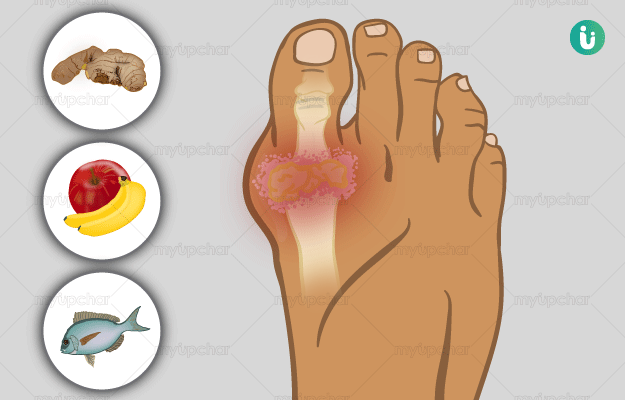Gout is a type of inflammatory arthritis that causes swelling, redness and pain in the affected joint. Most commonly, gout affects the big toe. However, it can affect any joint of the body and is usually progressive if not treated on time. The condition shows up in flares: the symptoms worsen and get better for a while (remission). With progression, the flare-ups become worse too.
Fortunately, gout can be easily managed with a combination of medications and dietary modifications. The idea is to control inflammation, prevent or delay flare-ups and reduce the levels of uric acid in the body, the underlying cause of gout.
Uric acid is a product of the breakdown of purines in the body. Purines are organic compounds that are present in certain foods such as beer, certain kinds of meat, peas and seafood like sardines and mussels. If you are a male, are overweight or an alcoholic, you are at higher risk of developing high uric acid levels in the blood and hence gout.
A typical diet for gout patient focuses on reducing purine intake and increasing the intake of liquids to flush out the extra uric acid from the body. This diet should also be followed by people who have high uric acid levels but do not have any symptoms of gout yet.
















